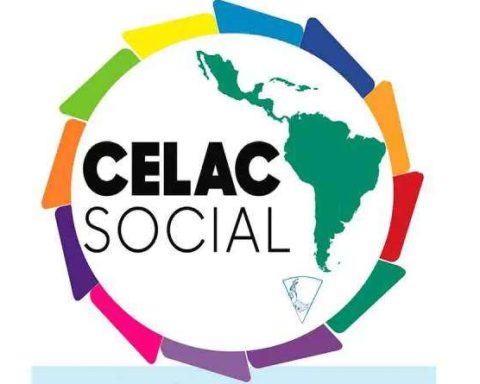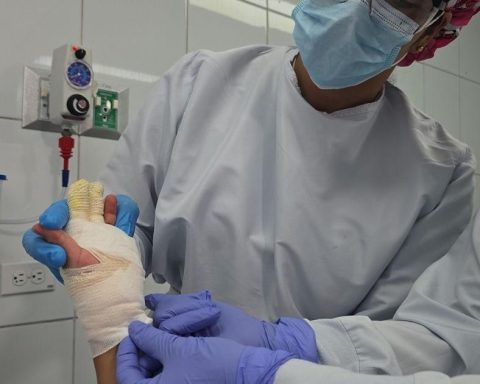The average interest rate on revolving credit cards rose 7.1 percentage points for families, from 422.4% per year in May to 429.5% per year in June this year. In 12 months, however, interest rates on this type of credit card fell 6.3 percentage points. The data are in the Monetary and Credit Statistics released this Friday (26) by the Central Bank (BC).
Revolving credit lasts 30 days and is taken out by the consumer when he pays less than the full amount of the card bill. In other words, he takes out a loan and starts paying interest on the amount he was unable to pay off.
The modality has the highest rates on the market. In January of this year, the law that limits revolving interest to 100% of the debt valuebut the measure does not affect the interest rate agreed upon at the time the credit was granted. As it only applies to new financing, there was no impact on the statistical calculation for June.
After 30 days, financial institutions offer installment payments for credit card debt. In the case of installment payments, interest rates fell by 5.4 percentage points per month and 15.6 percentage points over 12 months to 180.5% per year.
In addition to the drop, the result of free credit to families in June was impacted by the 6 percentage point drop in non-consigned personal credit operations, to 87.8% per year, and by the 3.1 percentage point increase in special checks, to 135% per year.
As a result, the average interest rate on credit with free resources to individuals was 51.7% per year, a decrease of 0.7 percentage points in the month and 7.4 percentage points in 12 months.
In corporate transactions, the average rate reached 20.9% per year, a monthly increase of 0.3 percentage points and a drop of 1.9 percentage points in 12 months. This result was mainly due to the monthly increases in the average rates for overdraft facilities (14.1 percentage points), working capital with a term of over 365 days (1.7 percentage points) and installment credit cards (13.2 percentage points). Conversely, there was a drop of 18.6 percentage points in revolving credit cards and a 0.6 percentage point drop in discounts on trade notes and receivables.
Average rates
In total credit with free resources, considering individuals and legal entities, the average interest rate reached 39.6% per year in June, with decreases of 0.3 percentage points (pp) in the month and 4.6 percentage points in 12 months.
In free credit, banks have the autonomy to lend money raised on the market and set the interest rates charged to customers. In directed credit, the rules are set by the government and are basically intended for the housing, rural, infrastructure and microcredit sectors.
In the case of targeted credit, the average rate for individuals was 10.1% per year in June, an increase of 0.2 percentage points in the month and a decrease of 1.6 percentage points in 12 months. For companies, the rate increased by 0.6 percentage points in the month and 0.5 percentage points in 12 months, to 12.4% per year. In total, the average rate for targeted credit was 10.6% per year last month, an increase of 0.2 percentage points in the month and a decrease of 1.1 percentage points in 12 months.
As a result, the average interest rate on credit concessions, considering all segments, continues to slow down and reached 27.86% per year in June, a reduction of 0.42 percentage points in the month and 3.8 percentage points in 12 months. The peak interest rate occurred in May last year, when it reached 32.2% per year.
The behavior of average bank interest rates occurs at a time when the economy’s basic interest rate, the Selic, has been reduced. The Selic is the Central Bank’s main instrument for controlling inflation and, with price control, since August of last year, the Central Bank has cut the Selic seven times in a row.
At the last meeting, however, with the recent rise in the dollar and the increase in economic uncertainties, the Monetary Policy Committee (Copom) stopped the interest rate cut started almost a year ago and kept the base rate at 10.5% per year.
From March 2021 to August 2022, Copom raised the Selic rate 12 times in a row, in a monetary tightening cycle that began amid rising food, energy and fuel prices. For one year, from August 2022 to August 2023, the rate was kept at 13.75% per year, seven times in a row. With price control, the Central Bank began to cut the Selic rate.
Before the start of the upward cycle, the Selic rate had been reduced to 2% per year, the lowest level in the historical series that began in 1986. Due to the economic contraction caused by the COVID-19 pandemic, the Central Bank had lowered the rate to stimulate production and consumption. The rate remained at its lowest level in history from August 2020 to March 2021.
Wallet jump
The volume of credit operations in the National Financial System (SFN) reached R$585.9 billion in June, an increase of 2.4% in the month and an increase of 9.3% in 12 months.
The stock of all loans granted by banks stood at R$6.018 trillion, a growth of 1.2% compared to May and 9.9% in 12 months. The performance resulted from the 2.2% increase in the stock of credit to companies, which totaled R$2.327 trillion, and the 0.6% increase in credit to families, R$3.691 trillion.
The balance of expanded credit to the non-financial sector, which is the credit available to companies, families and governments, regardless of the source (banking, securities market or external debt), reached R$17.410 trillion, an increase of 2.2% in the month.
The main factors behind the monthly increase were the 5% increase in the balance of external loans, the 1.7% increase in public debt securities and the 1.1% increase in SFN loans. In the year-on-year comparison, expanded credit grew by 13.6%, with increases in the same components of 16.6%, 12.8% and 9.5%, respectively.

















